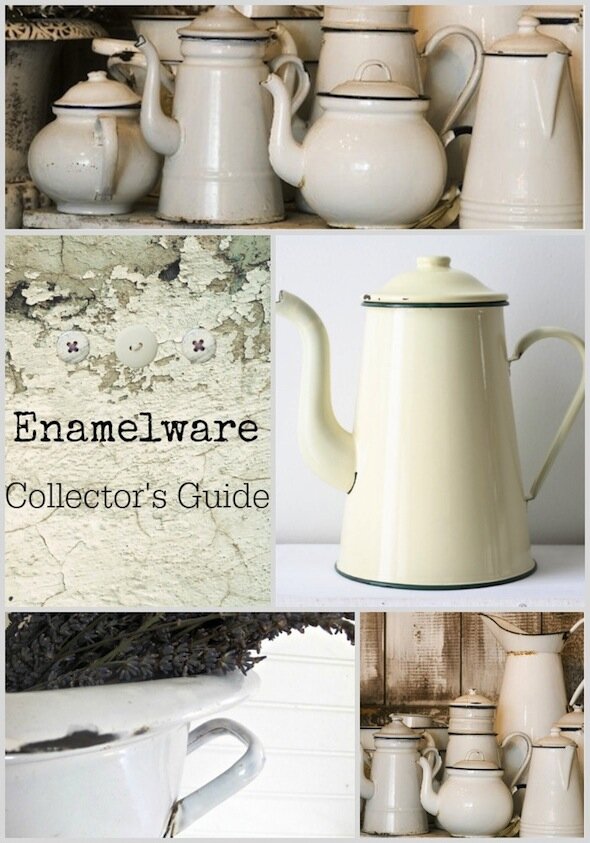Enamelware - a collector's guide
I like to know about stuff, especially stuff I like. Don't you?Enamelware is something I like & collect, so I wanted to find out more about it.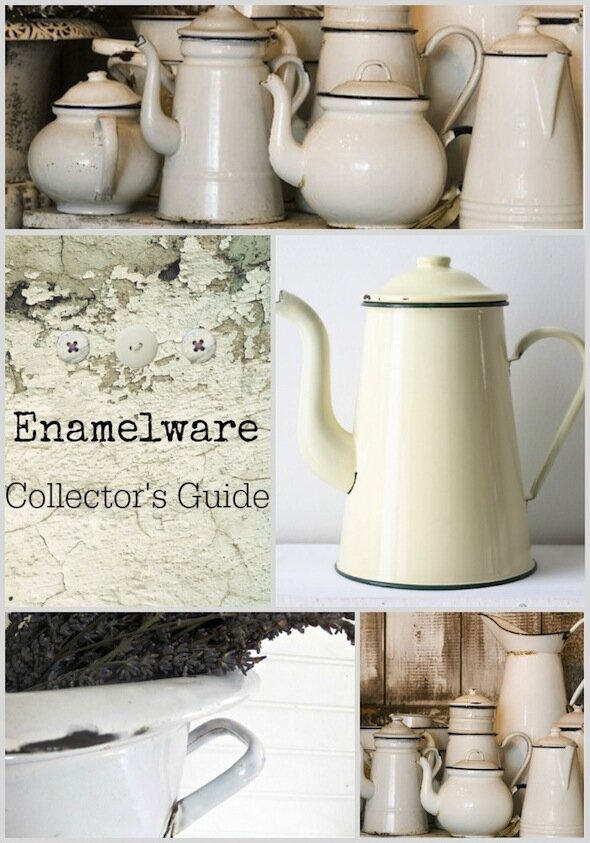 Once I did, I figured you would like knowing too.Enamelware was the first mass-produced American kitchenware.Production began in the 1870s, and continued through the 1930s.Items such as pots, kettles baking tins, and ladles were stamped from thin sheets of iron, steel, or aluminum, then coated with enamel, which was fused to the metal in a very hot oven.
Once I did, I figured you would like knowing too.Enamelware was the first mass-produced American kitchenware.Production began in the 1870s, and continued through the 1930s.Items such as pots, kettles baking tins, and ladles were stamped from thin sheets of iron, steel, or aluminum, then coated with enamel, which was fused to the metal in a very hot oven.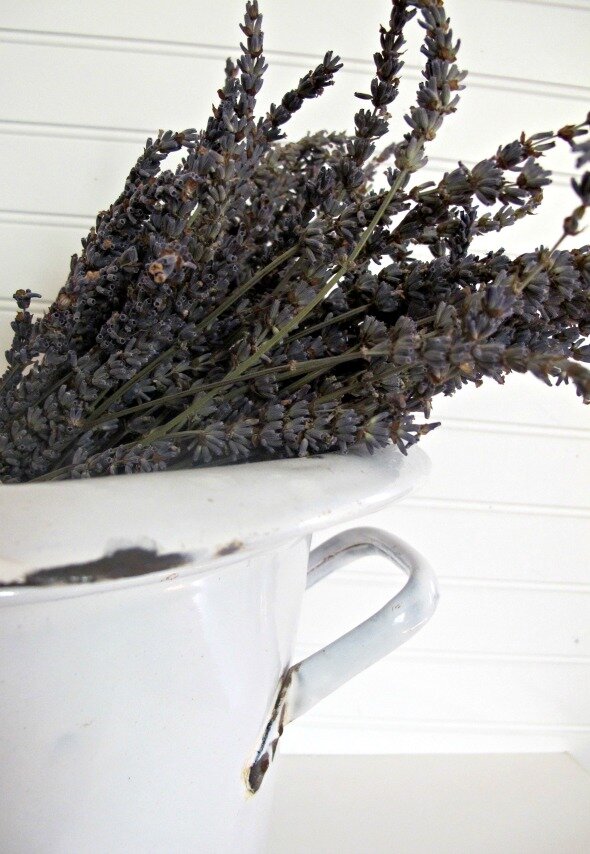 Much lighter than the average kitchenware, easier to clean and less fragile than china, enamelware was very popular.Enamelware usually came in blue, red, purple, brown, green, pink, gray and white.Patterns were as varied as the colors; besides the familiar swirls, mottles, speckles, shades, and solids. Some pieces sported a festive jumble of colors collectors call "end of day," because it was made with a mix of leftover glazes.White was the most produced color. Usually the whites had a blue or red rim.
Much lighter than the average kitchenware, easier to clean and less fragile than china, enamelware was very popular.Enamelware usually came in blue, red, purple, brown, green, pink, gray and white.Patterns were as varied as the colors; besides the familiar swirls, mottles, speckles, shades, and solids. Some pieces sported a festive jumble of colors collectors call "end of day," because it was made with a mix of leftover glazes.White was the most produced color. Usually the whites had a blue or red rim.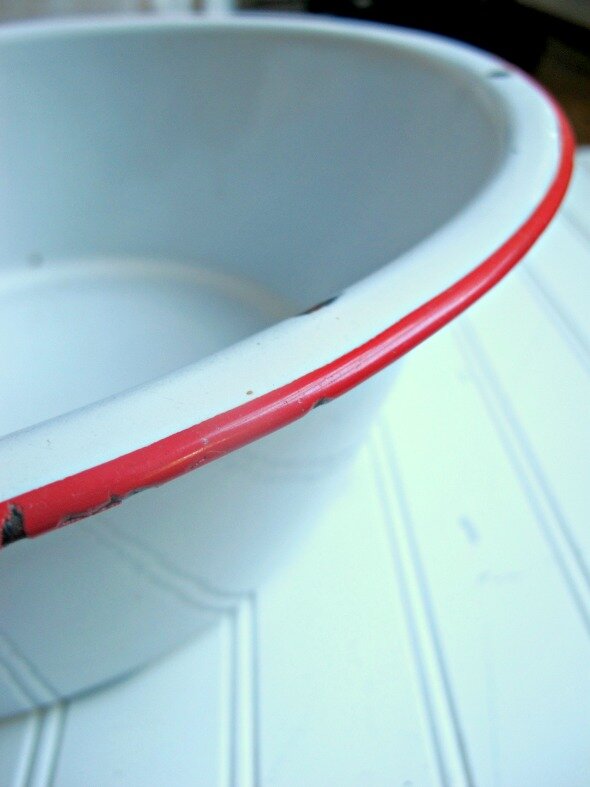 Orange is rarer color. I wish I had bought this one from Attic Antics. (Going to see if it is still available now!)
Orange is rarer color. I wish I had bought this one from Attic Antics. (Going to see if it is still available now!)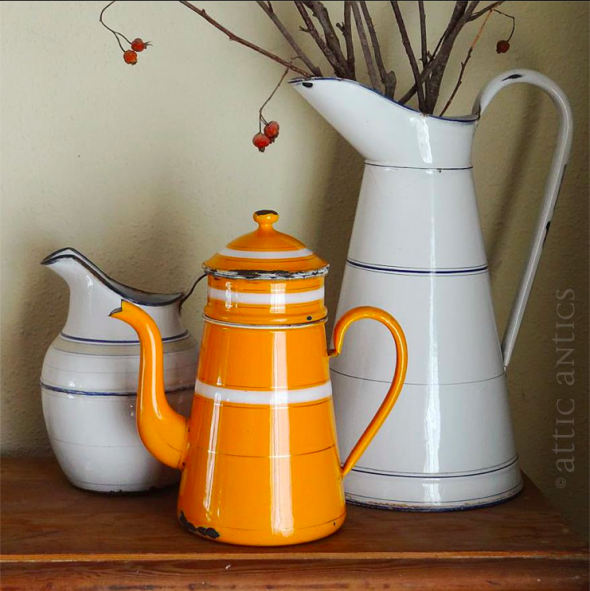 Made by several manufacturers here in America and abroad, enamelware was known by many names.The names Agateware and Graniteware caught on and came to be used interchangeably with generics such as porcelainware and speckleware.Graniteware remains the name most widely used by collectors today.
Made by several manufacturers here in America and abroad, enamelware was known by many names.The names Agateware and Graniteware caught on and came to be used interchangeably with generics such as porcelainware and speckleware.Graniteware remains the name most widely used by collectors today.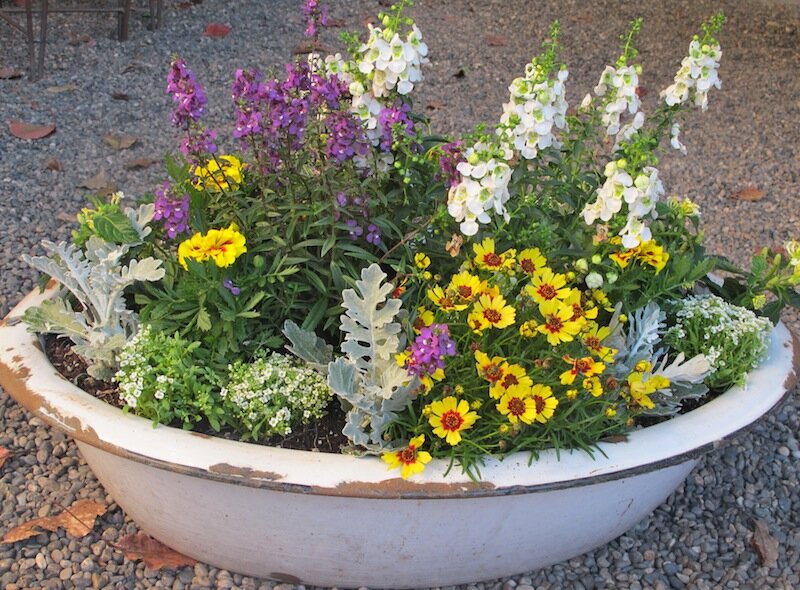 Many pieces that survived home life at the turn of the century were lost to World War II scrap-metal drives,.The once plentiful kitchenware is now harder to find. A genuine antique may have its maker's name or date fired into the glaze on the bottom. But as it was not precious when made, it was common not to mark the pieces.Enamelware was manufactured again in the US during the 1960s, and is produced in various locations around the world today.
Many pieces that survived home life at the turn of the century were lost to World War II scrap-metal drives,.The once plentiful kitchenware is now harder to find. A genuine antique may have its maker's name or date fired into the glaze on the bottom. But as it was not precious when made, it was common not to mark the pieces.Enamelware was manufactured again in the US during the 1960s, and is produced in various locations around the world today.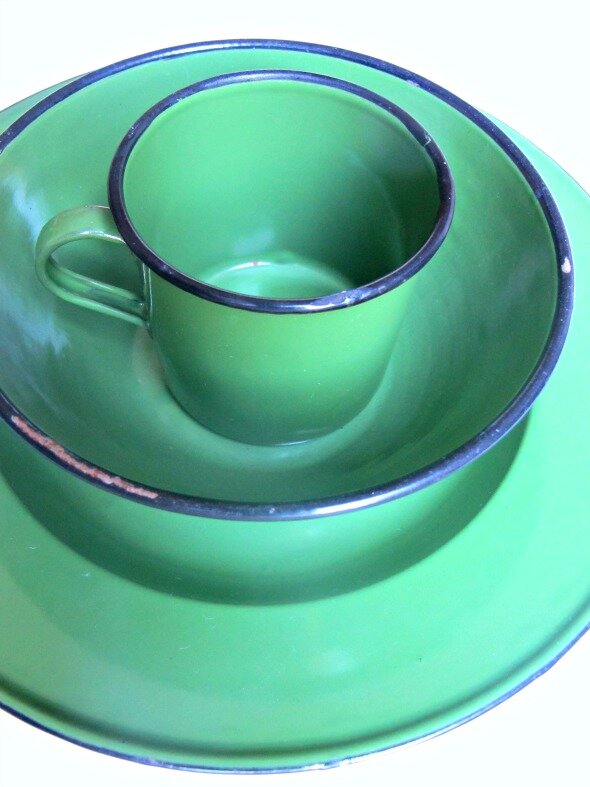 A century old muffin tin can be worth more than $1,500 if it is in perfect condition, has a rare shape and color or the original label. Teapots and mixing bowls in near-mint condition are more common and might cost $30 to $300.Big pitchers are a favorite of mine, like this one from Abeille Antiques . These run about $100 or so.
A century old muffin tin can be worth more than $1,500 if it is in perfect condition, has a rare shape and color or the original label. Teapots and mixing bowls in near-mint condition are more common and might cost $30 to $300.Big pitchers are a favorite of mine, like this one from Abeille Antiques . These run about $100 or so.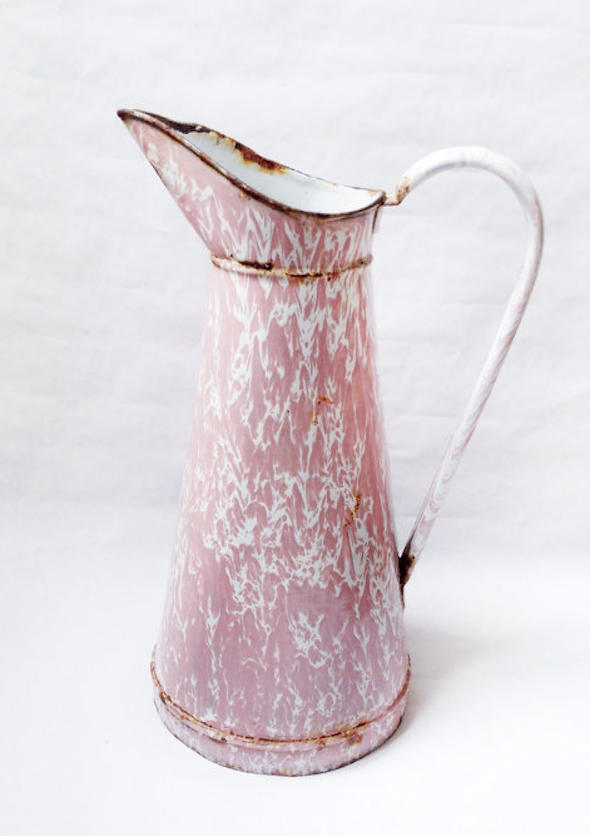 Worn ladles, funnels, and pie tins can sell for about $5 to $10. Rare colors and patterns -- purple, red, cobalt-blue swirls -- are the priciest. Solid and shaded pieces are much more affordable.You can tell the older pieces by the smoothness of the finish, riveted handles and spouts, and handles or knobs made out of wood instead of plastic.
Worn ladles, funnels, and pie tins can sell for about $5 to $10. Rare colors and patterns -- purple, red, cobalt-blue swirls -- are the priciest. Solid and shaded pieces are much more affordable.You can tell the older pieces by the smoothness of the finish, riveted handles and spouts, and handles or knobs made out of wood instead of plastic.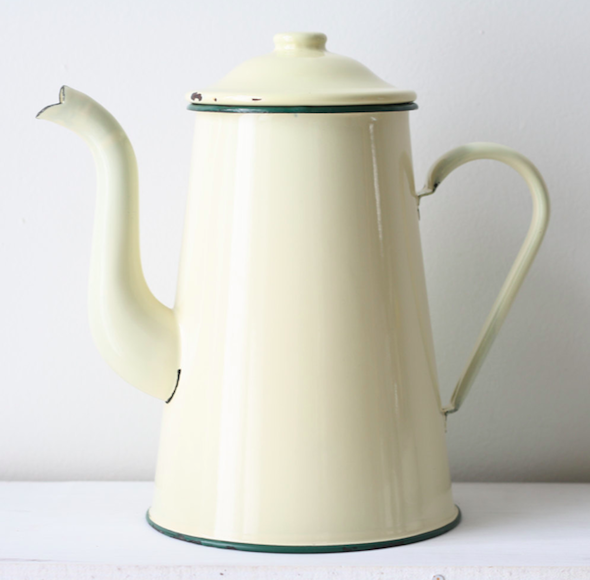 Weight also helps date a piece. In general, the heavier the piece the older. Like this coffee pot from Passe Simple.Sound can also help determine the age. If a tap on the bottom sounds "tinny" the piece is probably not from the early production.
Weight also helps date a piece. In general, the heavier the piece the older. Like this coffee pot from Passe Simple.Sound can also help determine the age. If a tap on the bottom sounds "tinny" the piece is probably not from the early production. Like many antiques, you can get a sense of the age from the overall patina. And even if it is light in weight & sounds "tinny" if you love it - get it. (Like I should have with the orange piece!)Do you have any enamelware?** Kelly **
Like many antiques, you can get a sense of the age from the overall patina. And even if it is light in weight & sounds "tinny" if you love it - get it. (Like I should have with the orange piece!)Do you have any enamelware?** Kelly **

